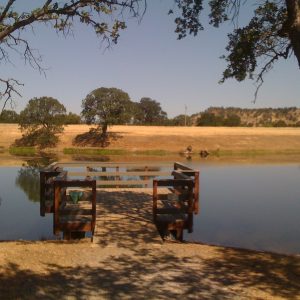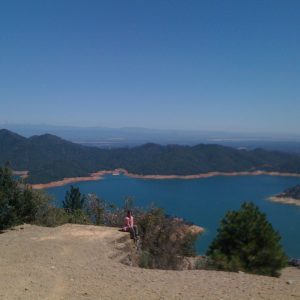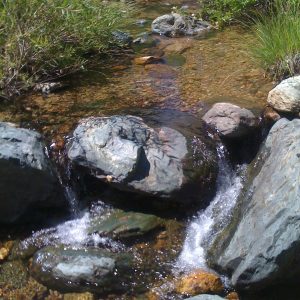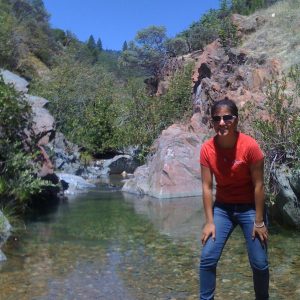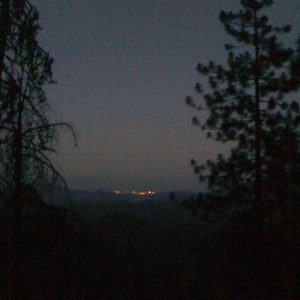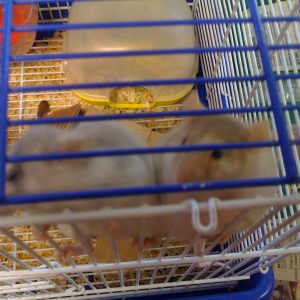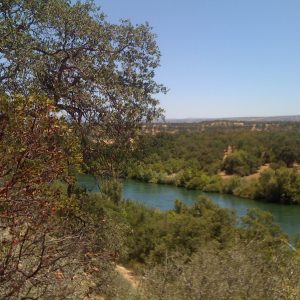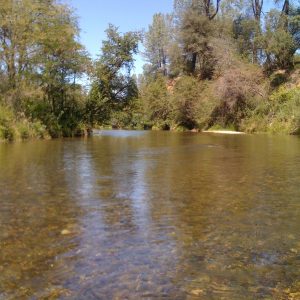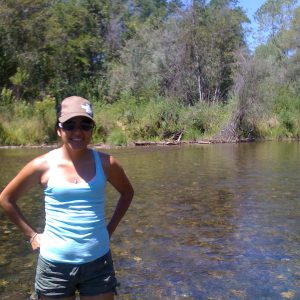July has been my first month here in Redding, California and it has it been HOT! I am working at the Bureau of Land Management and I am a part of the botany crew, which consists of my mentor Chase, Renee, and Virginia. I get to work mostly with Renee out in the field. As Chase puts it –we get to do all the fun stuff. Since we are in 100+ degree weather, July has focused primarily on trying to keep the native plants alive. We water every other day at a restoration site in Oak Slough. We also visit a greenhouse every other day where we have native plants to water and take care of the plants. We do quite a bit of seed collecting, but one day that stands out to me is when we went to collect seeds at Clear Creek. It was a typical hot day and since the native grasses are along the water, we got to dip our feet in the nice, refreshing water and walk along the edges to reach the seeds we needed. I have also been cleaning seeds here and there, which is oddly addicting. Once I start, I have a hard time stopping because I just want to finish all of it! I am mostly looking forward to the restoration season because I feel that being able to plant native plants is very rewarding.
Here at the BLM office, people seem to always be hard at work, or out and about in the field. Everyone is so friendly and welcoming. They were all eager to take me out on the field and show me their projects:
HOOTING!
Renee and I were able to join our wildlife biologist, Stewart, for a night of “hooting.” The spotted owl has been outcompeted for resources by the bard owl, so it is protected as a threatened species under the Endangered Species Act. Basically, he does these surveys on predestinated locations in BLM land where he plays owl sounds to trigger a responding call from owls that may be in the area. If he finds a spotted owl nest, there are certain regulations that would need to be implemented to make sure it is undisturbed and protected. I gained so much respect for this work because since it happens at night and lasts until early morning so it is pretty difficult to stay awake, especially after a day of work. Despite the lack of sleep, however, the trip was very rewarding. Not only did I learn about the project, but I also got to hear a spotted owl call back to us! When this happens, Stewart must do a follow up survey where he actually has to go hike around and see if he finds the owl that called, to make this easier, he brings some mice. Once the owl takes it, Stewart can then follow it and see if it takes it to a nest and then record what he finds so that the nest and owl can be protected. He is still trying to locate it, so for the meantime, we still have two extremely adorable mice in the office. I admit, even though I am all for providing the owls with a meal, I am happy that the mice will still be there to greet me everyday.
A day with the forester
I joined Chase and Virginia on a trip with the forester, Jeff, to go look for a special status plant in an a bit of forestland that will soon be restored through timber sales. Since they don’t let any kind of fire take its course on the parcels of forestland, the trees get more dense than normal as more and more seedlings begin to cover the understory. The solution is to simulate the effects of a fire by thinning down the forest and selling the wood. If we found a population of the plant, Jeff would need to make sure they remained undisturbed during his project. Even though we weren’t able to find any populations, Jeff said he would still be on the look out for the plant during the sale. I learned so much from Jeff like how they don’t take dead trees because wildlife likes to use them. I saw different sites that demonstrated what a forest looks like before and after a restoration project. They have so many details to take into consideration before and after a project like this, from protecting the plants and wildlife to making sure the roads are properly closed down after the project.
Elderberry survey
Virginia and I joined Stewart for a day of surveying. Elderberry serves as the primary means of life for the elderberry beetle. The adult feeds on the leaves of the elderberry, lays eggs on the bark crevices, and after development, the adult creates an exit hole. In this survey, we recorded the GPS location of each elderberry clump, its height, width, number of trunks, condition, and other details including the presence or absence of elderberry beetle exit holes. It was a very hot day out on the field, but we got a lot done. It was also, however, my first encounter with ticks. I am not ashamed to say that I am still pretty scared of those things and how they bury their heads in the skin. Luckily, I did a tick check as soon as I could. So, the three I found did not have a chance to get that far.
July has been great –hot, but full of tons of new experiences. I feel very thankful for this opportunity and lucky to work with such amazing people. I am excited for what August has in store!
- Coyote Pond -a peaceful place with a nice little pier
- See that tiny pink figure in front of Lake Shasta? That’s me!
- Some mini waterfalls- discoveries as we search for seeds
- A secret little pool that Renee and Virgina showed me
- A night of HOoting: Little Redding in the distance
- The mice for the spotted owl surveys: so full of personality and constantly begging for treats
- All along the hike, Manzanita was everywhere, providing a nice contrast between its vibrant red wood and the blue green water in the background
- Clear Creek
- Clear Creek

